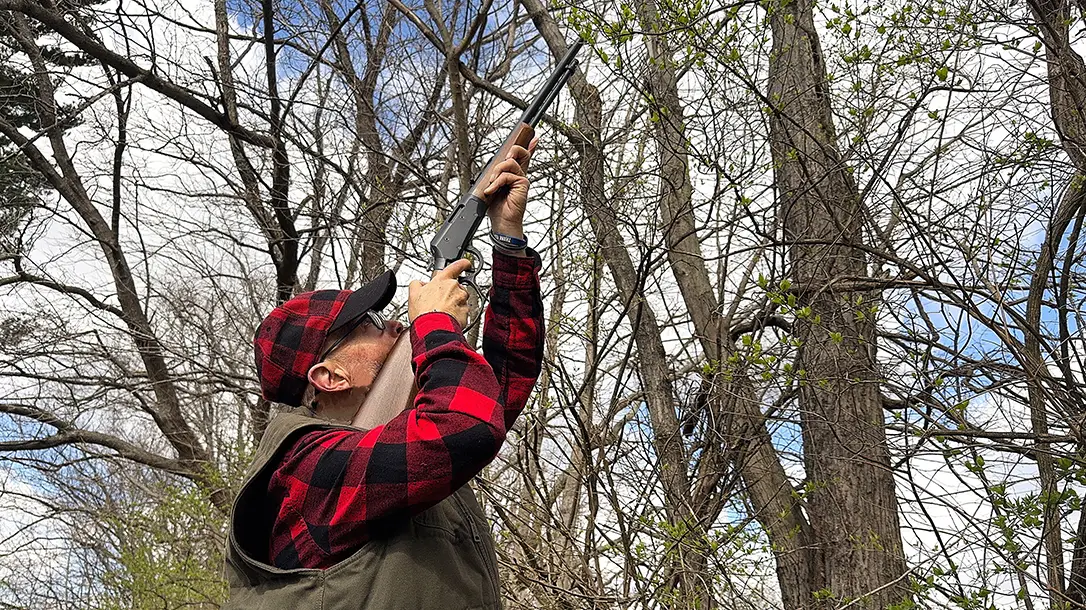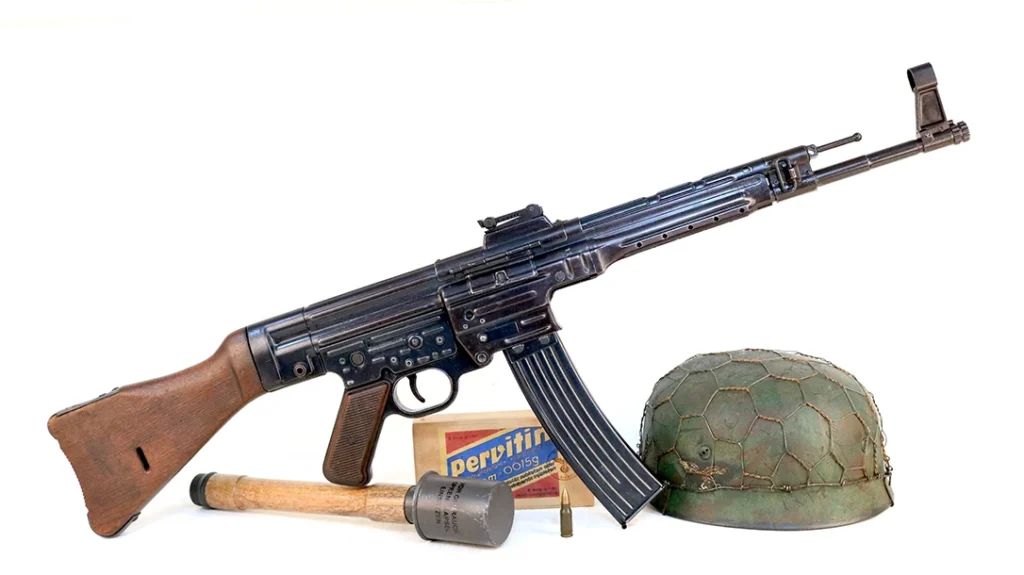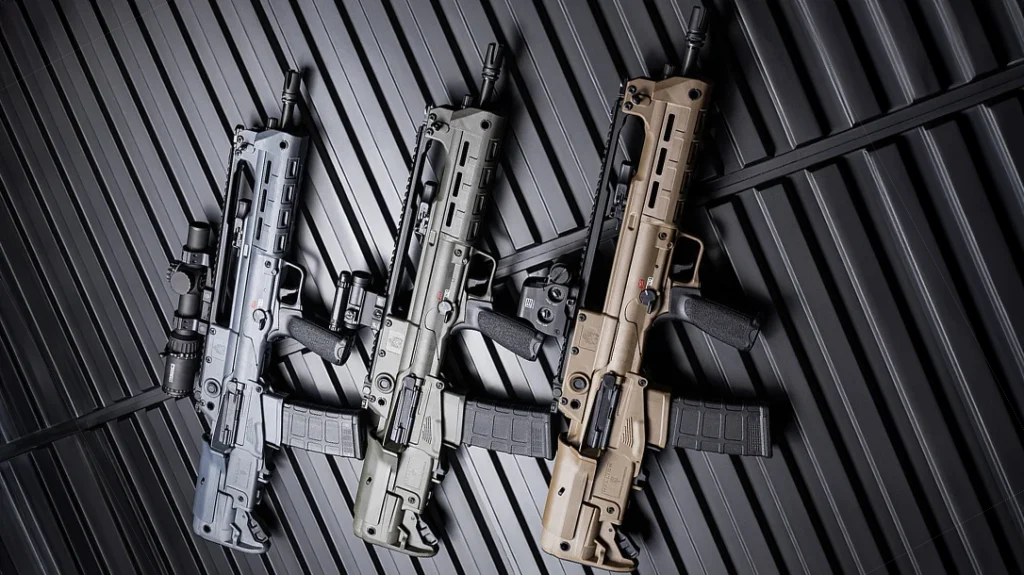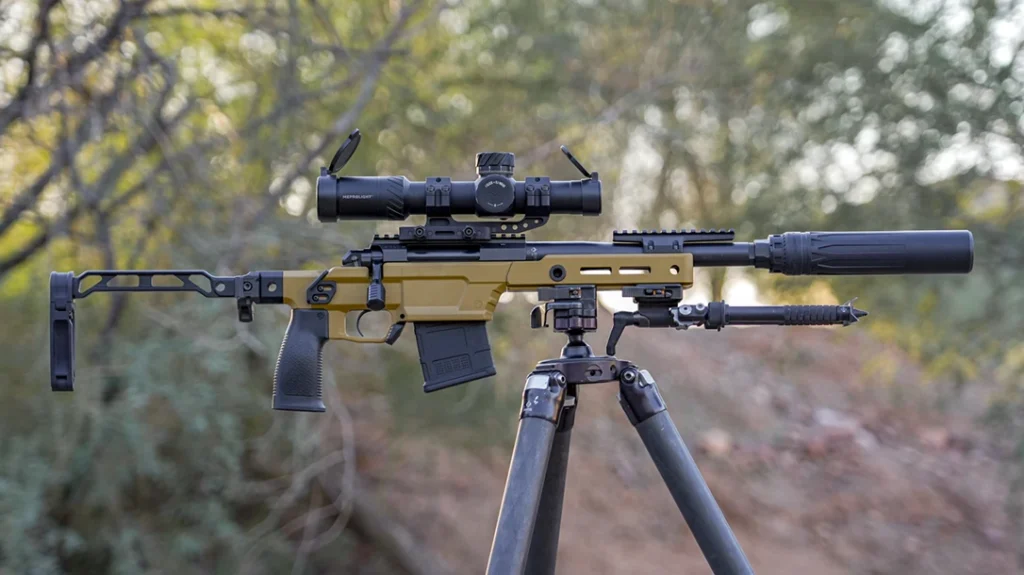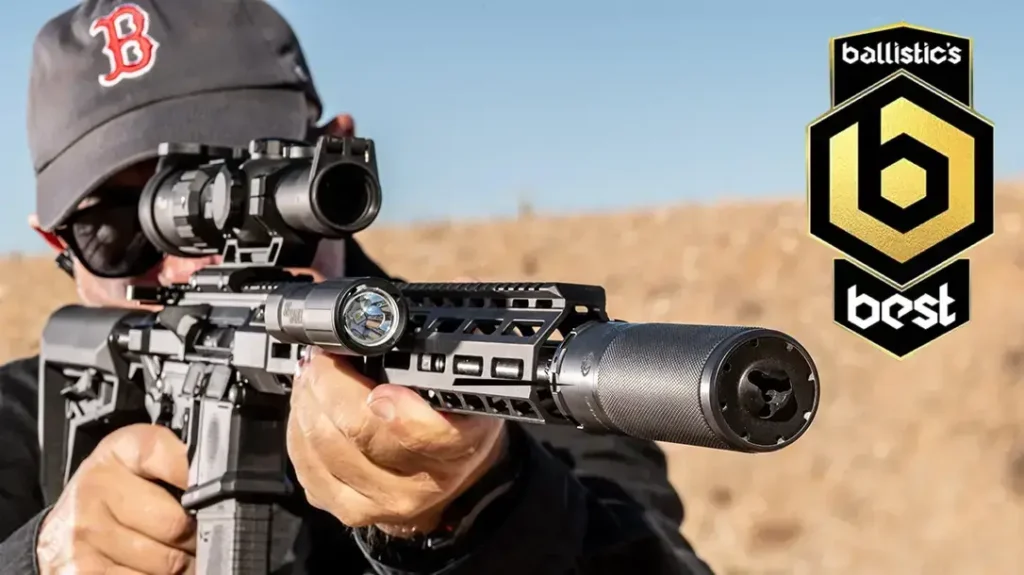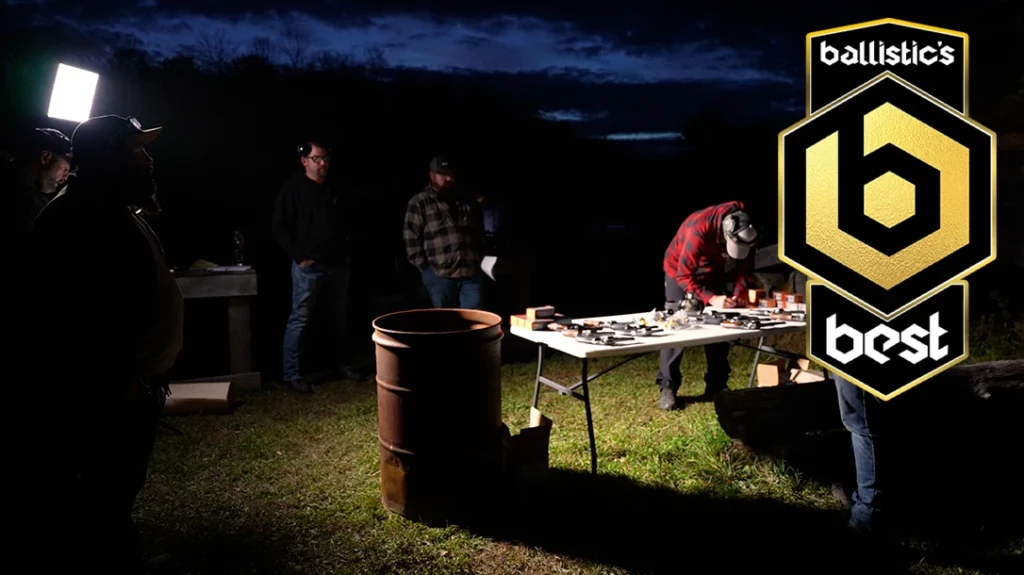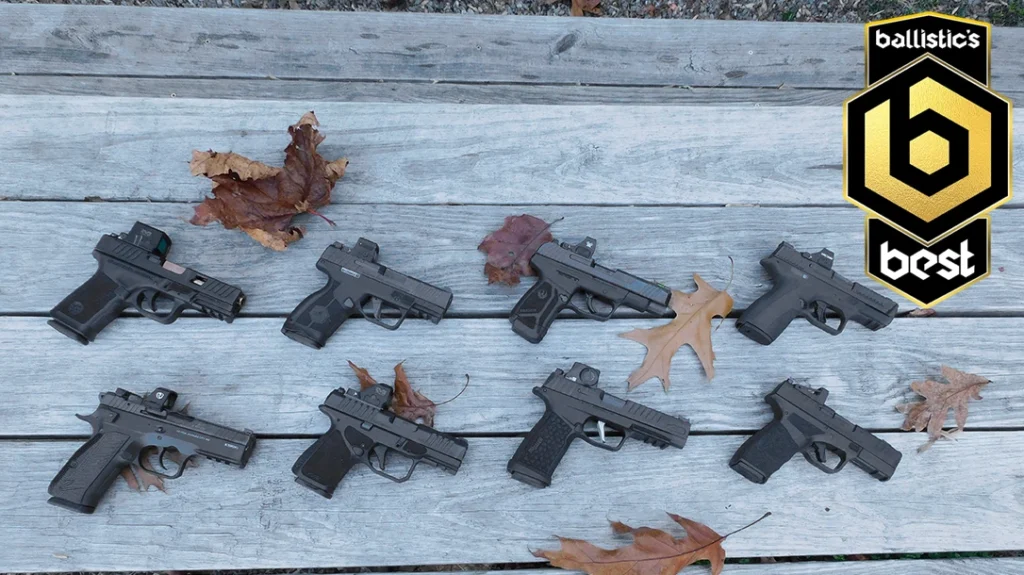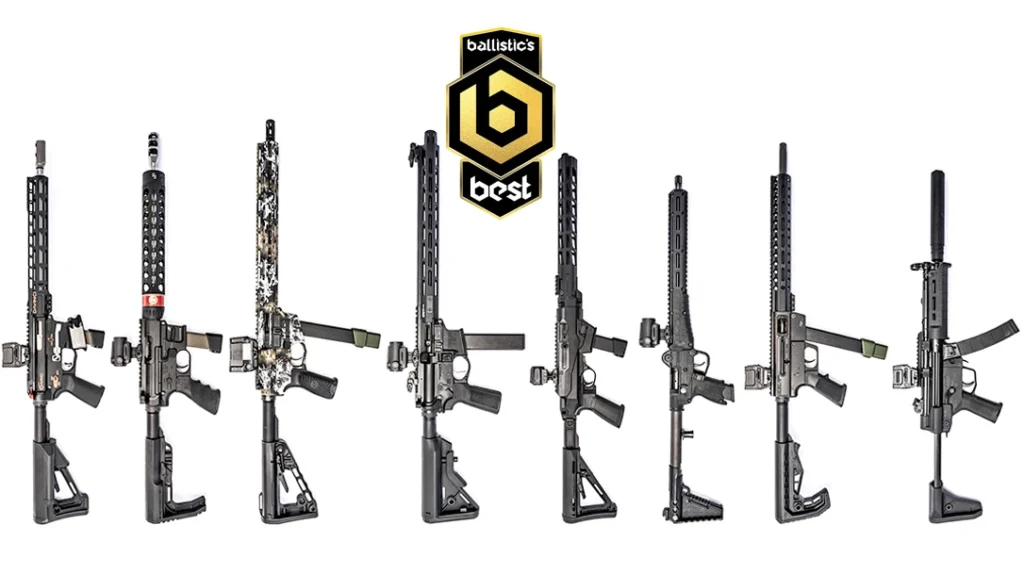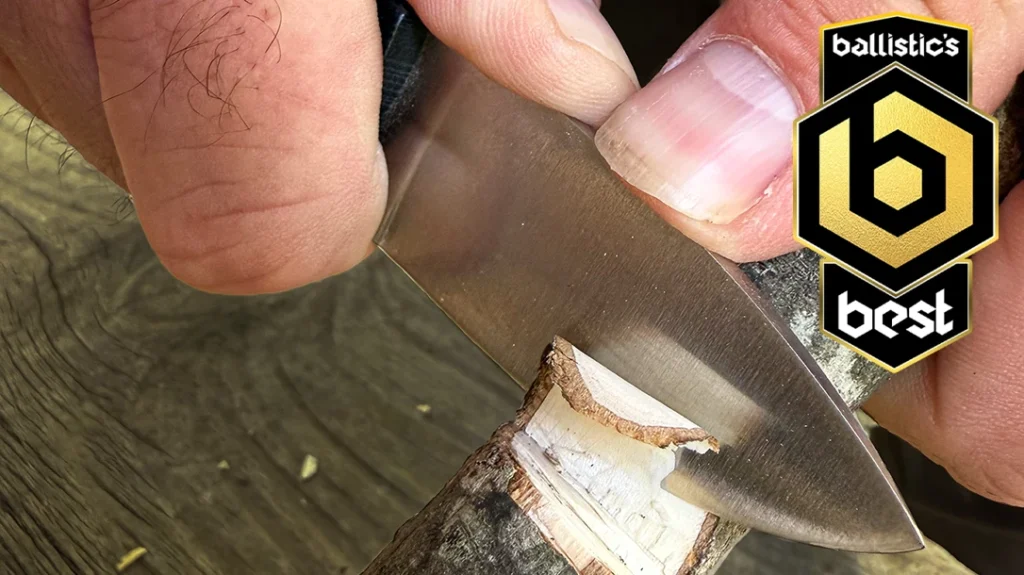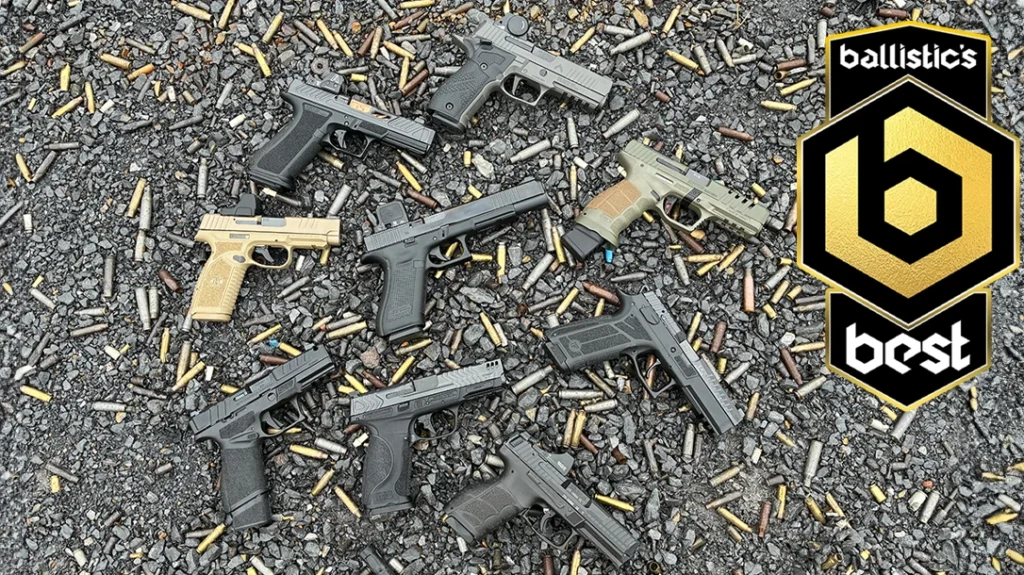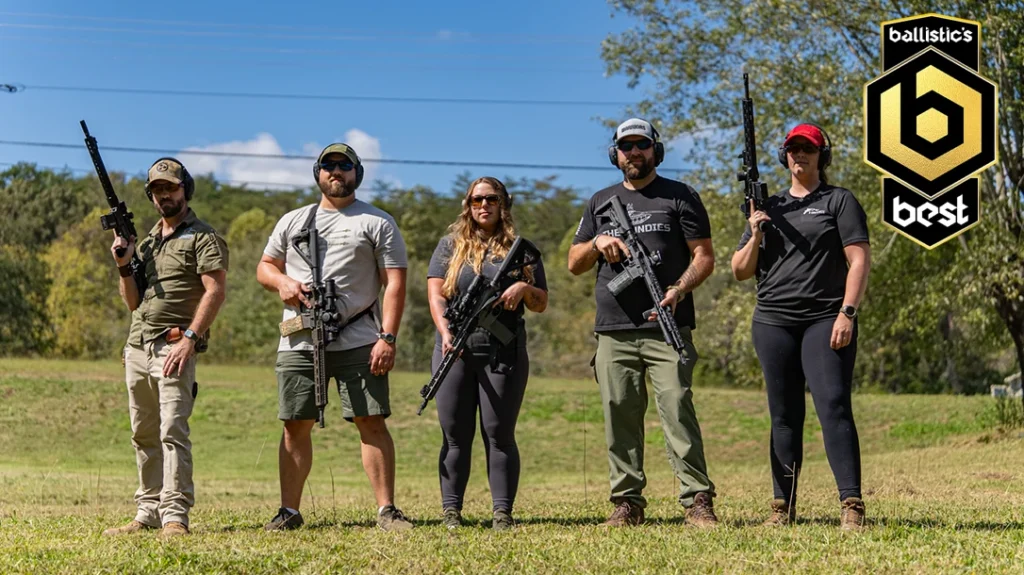While the company’s new theme is “Not Your Grandpa’s Savage,” I rather like my old Model 1895 lever-gun in .303 Savage that has spent some time with me during deer season. Savage started out in the lever-action rifle business when Arthur Savage founded the company in 1894. A rifle Savage had designed for Colt in 1892, failed in a bid for a U.S. Army rifle contract, and became the civilian Model 1895. It was a unique hammerless design, with a rotary magazine, that could handle the powerful smokeless powder cartridges with spitzer bullets. This platform evolved into the Model 1899, becoming the standard-bearer for Savage Arms, with some 58 different variations and configurations. Savage discontinued the rifle in 1997.
Savage Arms Brings Back First Lever-Action Since the Famed Model 99
The Revel Classic is the first of two versions of lever-action rifles, which also includes the Revel DLX. I first saw and had the opportunity to shoot one of the Revel .22 Long Rifle models at the 2025 SHOT Show Industry Day at the Range. I found the streamlined design impressive, along with the smooth lever action and contoured stock. So I immediately requested a sample gun for test and evaluation.
When the rifle arrived, as I took it out of the cardboard box, I noted that is came with an owner’s manual, empty chamber flag, safety padlock, and a packet of foam-rubber ear plugs. Doing a once-over; wood-to-metal and metal-to-metal fit was good. The medium profile carbon steel 18-inch barrel has a 1:16 twist rate and a matte-blue finish. Mounted in a dovetail near the muzzle is a post front sight, that is tubular at the top to mate with the U-notch rear sight, which is step-adjustable and dovetailed into the rear portion of the barrel.
Advertisement — Continue Reading Below
Besides the serial number on the bottom of the receiver, the only markings on the rifle (except for the Savage logo on the sides of the lever), reside just ahead of the rear sight, stamped into the top of the barrel. I noted a Savage Arms subsidiary in Canada manufactures the rifle.
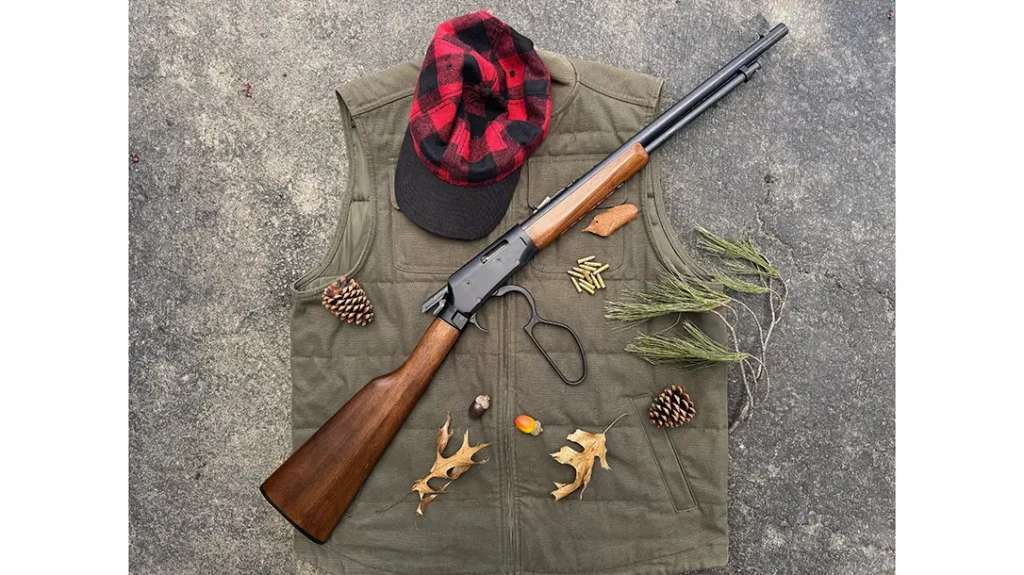
Revel Classic Receiver
The receiver is a three-part affair. On the outside is a black-coated aluminum cover. The top of the cover comes drilled and tapped for optics. Said cover mates with an aluminum lower receiver assembly, also black in color. Sandwiched in between is a steel upper receiver assembly. Into this assembly is fitted the barrel, steel magazine tube, plus it has rails for the steel bolt to ride in. Other internal parts of the action, like the sear, are also steel. The large-loop finger lever, trigger and hammer are not. The well-proportioned trigger features a smooth face. The pull weight broke a surprisingly crisp 2 pounds, 7.4 ounces per my Lyman digital trigger pull gauge.
Advertisement — Continue Reading Below
The serrated hammer spur juts out an upward angle. A cross-bolt safety is located just above the trigger in a recessed area of the lower receiver assembly. Pushed in from left to right, the safety is ‘on’ and prevents working the lever or cocking the hammer. If the action has been cycled and the safety applied, it locks the hammer in the cocked position, along with the trigger. The safety disengages easily with the trigger finger for right-handed shooters. There’s a safety notch, incorporated into the hammer at the first “click” when cocking. The cartridge capacity is 12 rounds of .22 LR, and the Revel Classic will be available later in .22 WMR and .17 HMR.
The plain-grained walnut buttstock comes straight-wristed with a satin finish and a checkered, black plastic buttplate featuring the famous Savage Indian Chief emblem. On the sides of the buttstock is a peculiar ridge that looks interesting, but serves no purpose. This ridge also resides on the walnut forend. An Allen/hex-head screw holds the forend in place. All of the screws utilize this same configuration except on the buttplate, featuring Phillips-head screws. There’s also a big red Savage sticker on the bottom of the forend. Like most tubular magazine .22 rifles, the Revel Classic loads through a slot in the magazine tube. After turning the knurled magazine cap to unlock it, the inner brass tube slides out, opening the slot for loading.
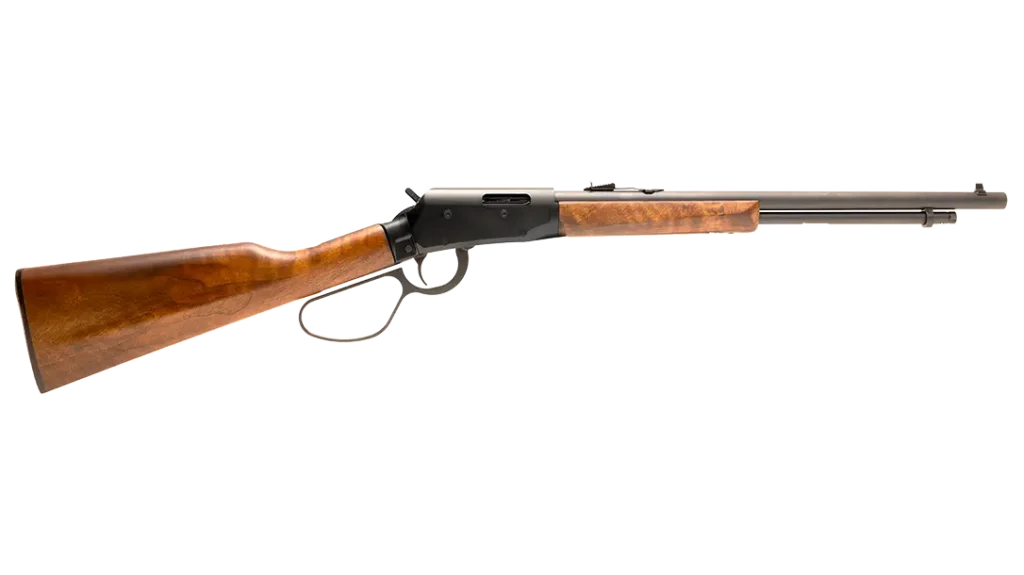
Advertisement — Continue Reading Below
Care and Feeding
One of the selling points of the Savage Revel Classic is its take-down feature. This enables shooters to break down the rifle into two sections: the barrel, forend and upper receiver, and the buttstock and lower receiver. This makes it handier for transportation, requiring less room. First, ensure to unload the rifle, and put the safety in the “safe” position. Lower the lever to the fully open position, then press in the two takedown pins on the cover as far as they will go. These captive pins remain attached. Pull the upper and lower halves in opposite directions to separate them.
To remove the bolt for cleaning the barrel from the breech end, you must remove the four hex screws on the cover using a 5/64-inch hex wrench. The cover and bolt both remove together by carefully sliding the cover upward and off the barrel assembly. Make sure the bolt remains within the cover. Now, the bolt slides forward and out the front of the cover. I won’t cover reassembly here; it’s more or less the reverse order, so read your owner’s manual.
Firearms chambered in .22 LR can have their foibles and work best with one particular brand/kind of ammunition. For this reason, I selected five different brands of .22 LR cartridges. First up was the CCI Mini-Mag Varmint load that has a 40-grain segmented HP bullet. Next was Federal’s Hammer Down, that has a nickel-plated case, and a 40-grain copper-plated HP bullet. Next, was the TAC-22 load from Norma, which is made for reliable performance, and has a 40-grain solid-point bullet. From Remington is their new Ranch Hand that has a 38-grain plated HP bullet. Lastly, was Winchester Wildcat, high-velocity load with a 40-grain solid-point bullet.
Advertisement — Continue Reading Below
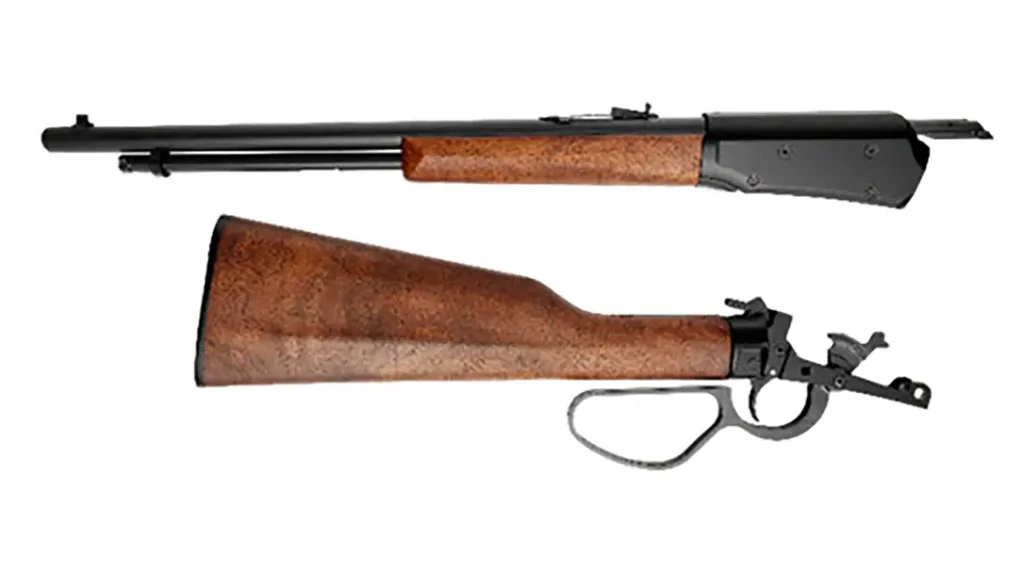
Home on the Range
I elected not to mount an optic on the Savage Revel Classic, but just to use the factory iron sights. To my mind, this is a short- to medium-range rifle, making it useful in the field potting small game and varmints, plinking at targets of opportunity or informal competition. I felt the factory sights should be sufficient for these endeavors. More on this later.
Several hours were spent at an indoor range with the new .22 LR lever-gun. Job one was to get some velocity figures, so I shot the test ammo through the Savage in close proximity to my Garmin Xero C1 Pro chronograph. The velocity figures are in the performance table. At the same time, I had positioned a target 15 yards downrange to check the point-of-aim/point-of-impact (POA/POI) with the sights. All 25 shots chewed a big hole out of the center of that target.
Advertisement — Continue Reading Below
For an accuracy potential evaluation, I sent a Targets Unlimited 5-bullseye target down to the 25-yard line. The bullseyes have a 1.5-inch red aiming circle in the center, and the middle target is bigger than the four corner targets. I thought it best to start in the center to see where the POA/POI was and then continue to shoot five-round groups on each of the other targets. That red circle would approximate the head on a squirrel up in the top of a tree. All shooting was done using an adjustable rest, from the bench.
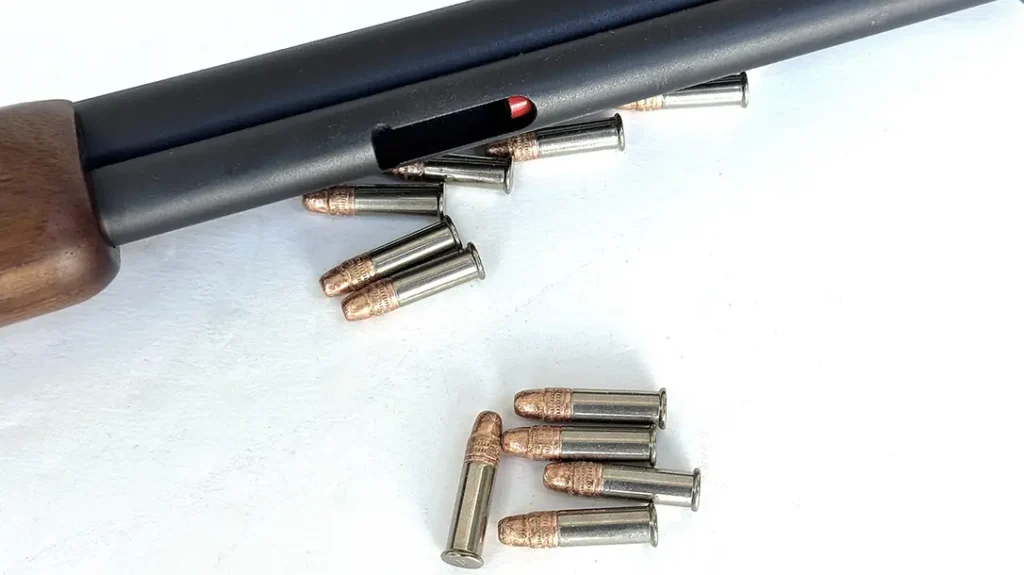
Sights
The first thing I noted was that the front sight was darn hard to see. Basically, it was black on black, and its tubular shape at the top covered the target’s red circle. At that point I wished I had dabbed some yellow nail polish on it. Depending on the cartridge, some shots were fired with a center hold, some with a 6 o’clock hold and some a half-center hold.
Advertisement — Continue Reading Below
Windage-wise, it tended to shoot slightly to the right. My tightest five-shot group was made using the Remington Rand Hand .22 LR ammunition. It produced a cluster that measured 0.85-inches; the CCI Mini-Mag load was close on its heels at 0.95-inches. The remaining group data can be seen in the table. Despite the sights and my 70-year-old eyes, none of the group averages were over 1.68 inches. In deference to the sights and my peepers, I threw out the worst group when computing the averages.
For some practical shooting and reliability exercise, I sent a Truglo reduced-size “Gunslinger” target down to the 15-yard-line. Using a mix of the test ammunition, I loaded the tubular magazine on the Revel Classic to its 12-round capacity. Then, from a standing, unsupported position, I emptied the rifle, shooting as fast as I could work the lever, get a “sort-of” sight picture, and press the trigger. This was done twice. Of 24 shots, 9 were in the X/10-ring, 9 were in the 9-ring, 5 landed in the 8-ring, and one strayed into the 7-ring. Again, most of the bullet impacts were to the right.
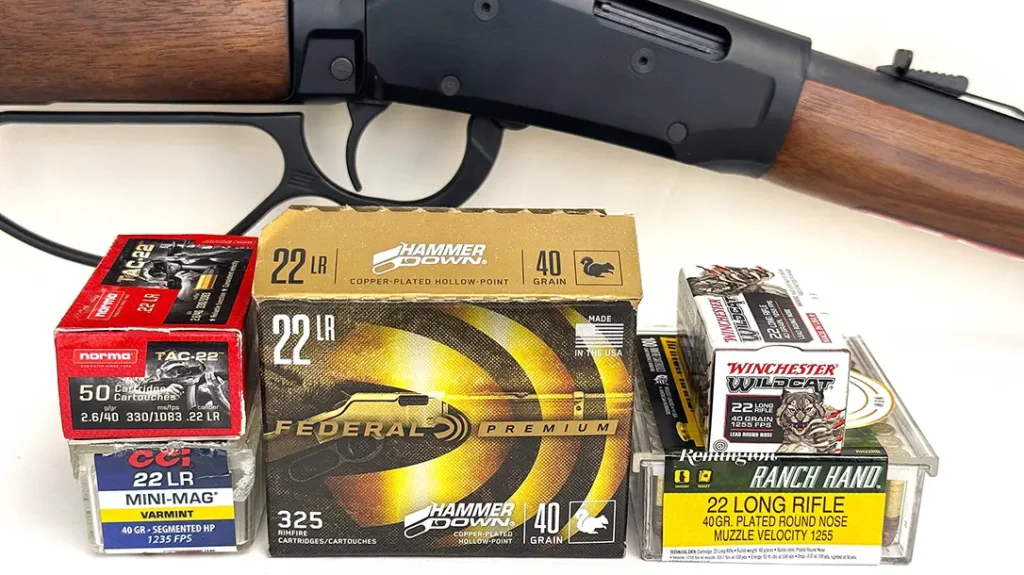
Advertisement — Continue Reading Below
Final Shots
My biggest concern with a firearm is reliability. I shot 174 rounds through the Savage Revel Classic and I had zero malfunctions. Feeding and ejection with the smooth lever action was 100%, plus there were no misfires. I’m certain that the remarkable trigger pull contributed to the rifle’s accuracy. I’m sure I could’ve done better with a scope. I might’ve even done better with a gold or ivory bead on that front sight.
There were two things I found disturbing during the T&E. At the conclusion of my two rapid-fire strings, I looked down and saw the rear takedown pin was protruding from the receiver. It’s captive and won’t just fall out, but apparently the vigorous working of the lever moved it outward. It again slid out as I was cleaning the rifle. Turns out, there are two tiny set screws in the right-front and right-rear of the right side of the receiver cover that can be tightened (ever-so-slightly) with a tiny star wrench to provide some friction to keep the pins in place. I also noted that the black coating on the non-ferrous parts was less than durable.
For a price point of $439, I believe the Savage Revel Classic is one heck of a bargain in anyone’s book. It has a classic, yet updated appearance that appeals to a blue steel and walnut person like me. It will make a fine beginner’s rifle, an inexpensive hunting rifle, plinker, and I wouldn’t be surprised to see some little buckeroo using one at a Single Action Shooting Society Cowboy Action Shooting match.
Advertisement — Continue Reading Below
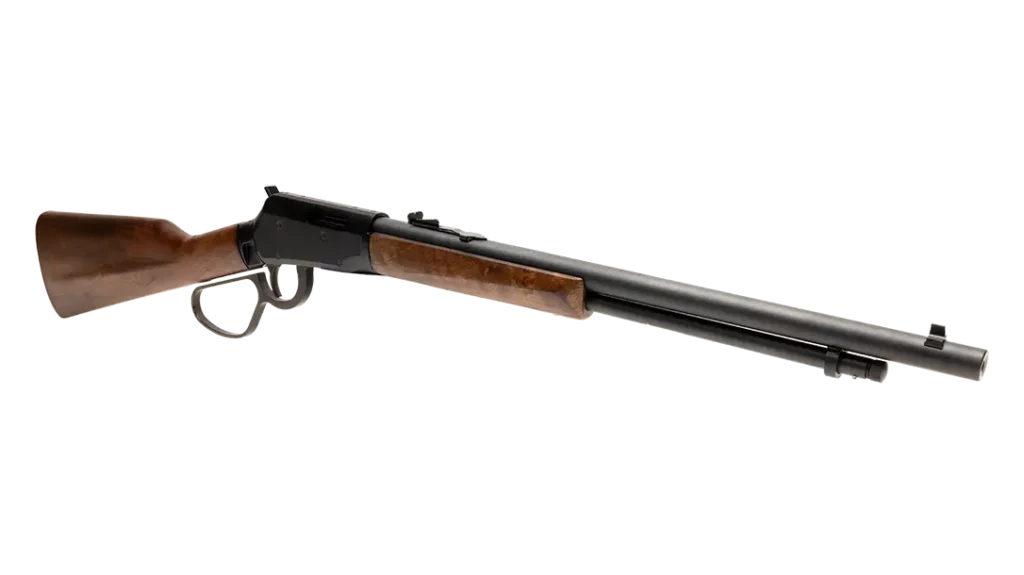
Savage Revel Classic Specifications
- MECHANISM: Lever-action rifle
- CALIBER: .22 LR (soon to be available in .17 HMR & .22 WMR)
- CAPACITY: 12 cartridges
- BARREL: 18 inches
- OA LENGTH: 36.5 inches
- EMPTY WEIGHT: 6.1 pounds
- SIGHTS: Post-type front, step-adjustable rear
- FINISH: Matt-blue barrel, black coated receiver
- STOCKS: WalnutMSRP: $439
Savage Revel Classic .22 LR Performance
| Cartridge | Ave. Velocity | Best Group | Average Group |
| CCI Mini-Mag Varmint 40-grain Segmented HP | 1,189 FPS | 0.95” | 1.55” |
| Federal Hammer Down 40-grain Copper-Plated HP | 1,093 FPS | 1.49” | 1.68” |
| Norma TAC-22 40-grain RN Solid-Point | 1,011 FPS | 1.09” | 1.45” |
| Remington Ranch Hand 38-grain Plated HP | 1,178 FPS | 0.85” | 1.27” |
| Winchester Wildcat 40-grain RN Solid-Point | 1,237 FPS | 1.35” | 1.61” |
